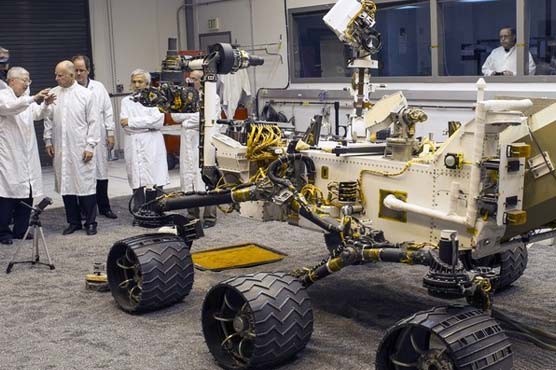Mars rover Curiosity makes first test drive

Curiosity made its first test drive Wednesday on ancient soil of Mars.

Curiosity made its first test drive Wednesday on ancient soil of Mars.